Building or upgrading to a two-car garage is a significant home improvement project. One of the most crucial decisions you’ll make is determining the right dimensions. While length and height are important, the width of your two-car garage is paramount for comfortable parking, storage, and overall functionality. This guide will delve into the ideal width for a two-car garage, exploring standard sizes, minimum requirements, and factors to help you make the perfect choice for your needs.
Standard Two-Car Garage Widths and Dimensions
So, how wide is a standard 2-car garage? The answer isn’t a single number, as “standard” can vary. However, common widths for a two-car garage typically range from 20 feet to 28 feet. Along with width, the depth (length) is equally important, and standard dimensions often come in square or rectangular configurations.
Here’s a breakdown of typical two-car garage sizes:
| Standard 2-Car Garage Size Category | Dimensions (Width x Depth) | Square Footage |
|---|---|---|
| Minimum | 20ft x 20ft | 400 sq ft |
| Average | 22ft x 22ft | 484 sq ft |
| Average to Spacious | 24ft x 24ft | 576 sq ft |
| Deeper Average | 24ft x 30ft | 720 sq ft |
| Large | 28ft x 28ft | 784 sq ft |

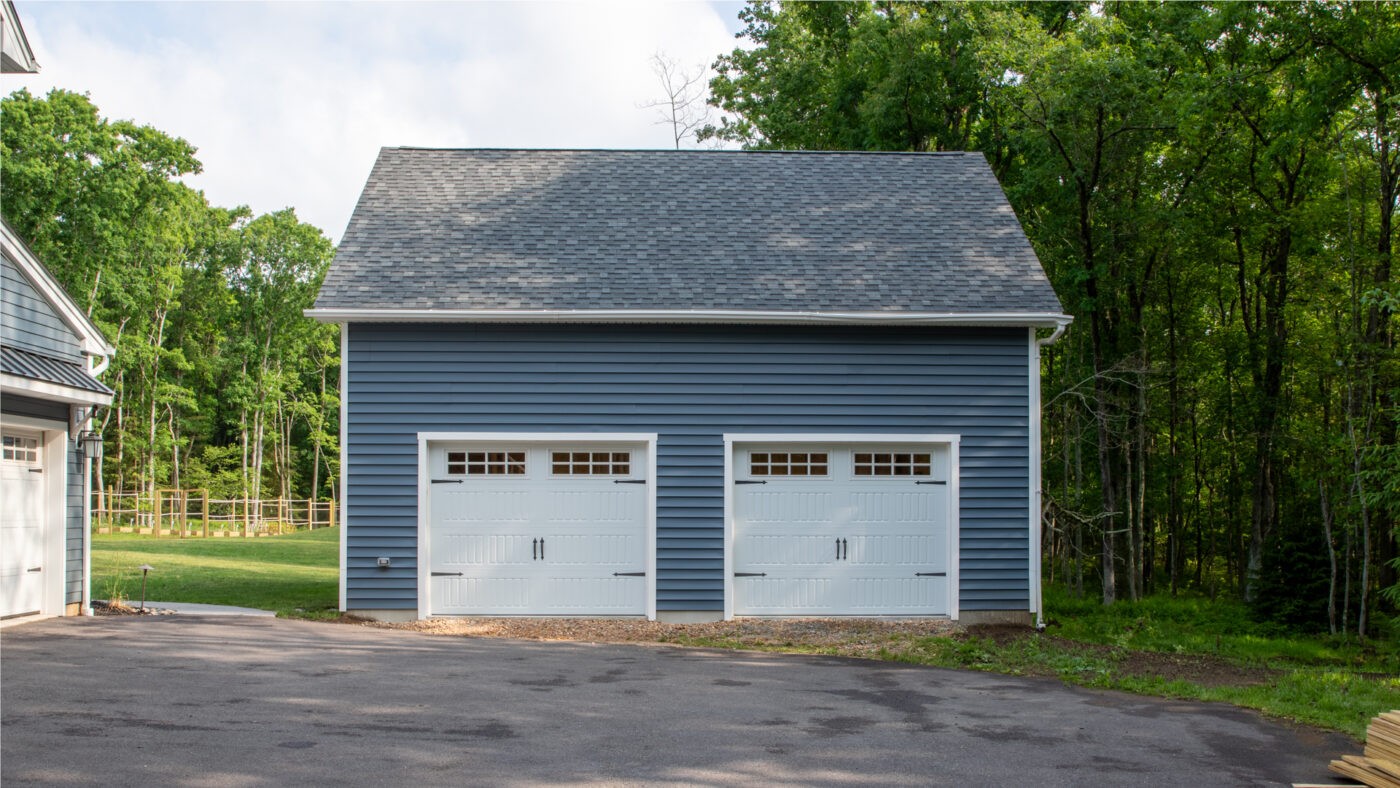
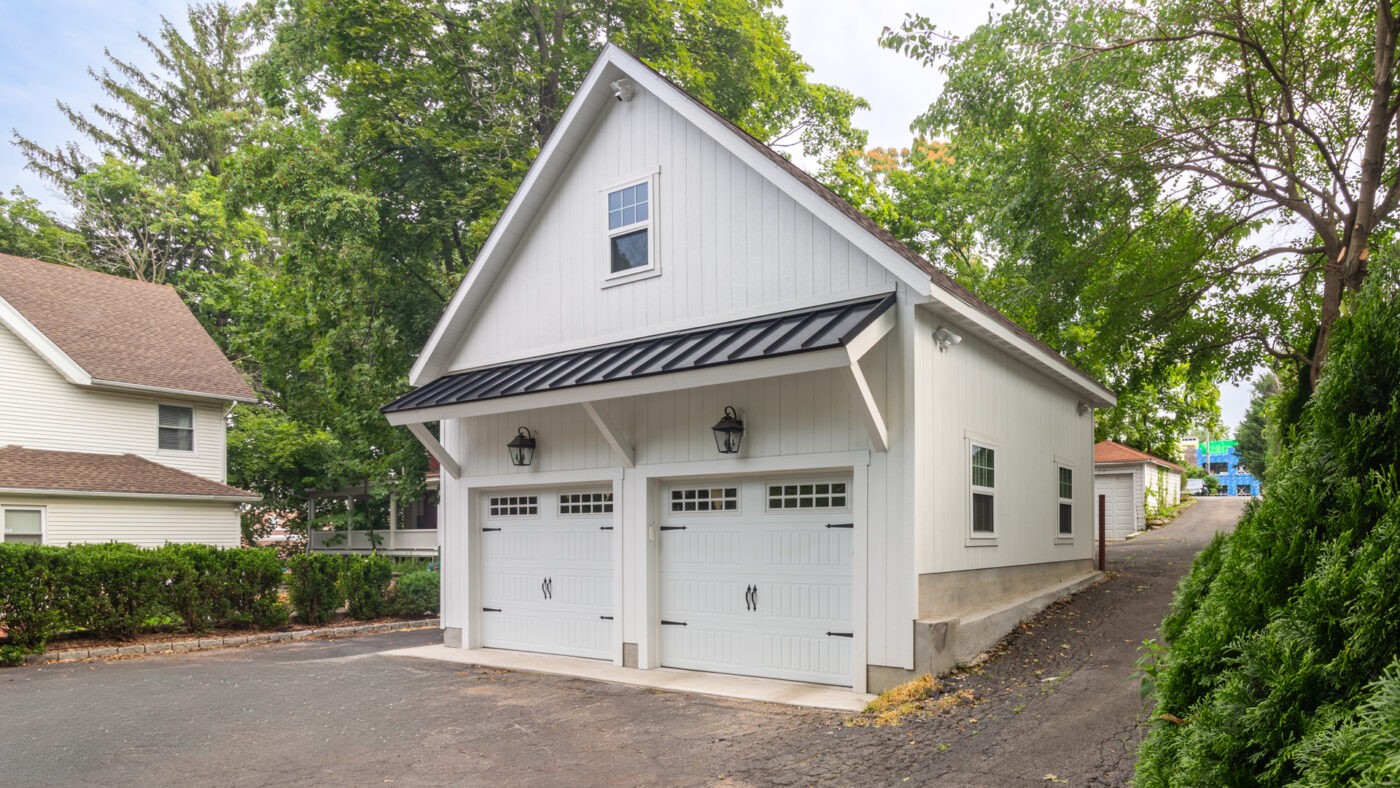
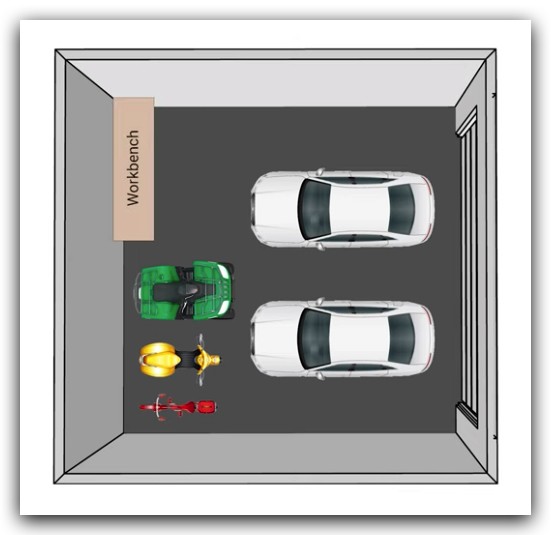
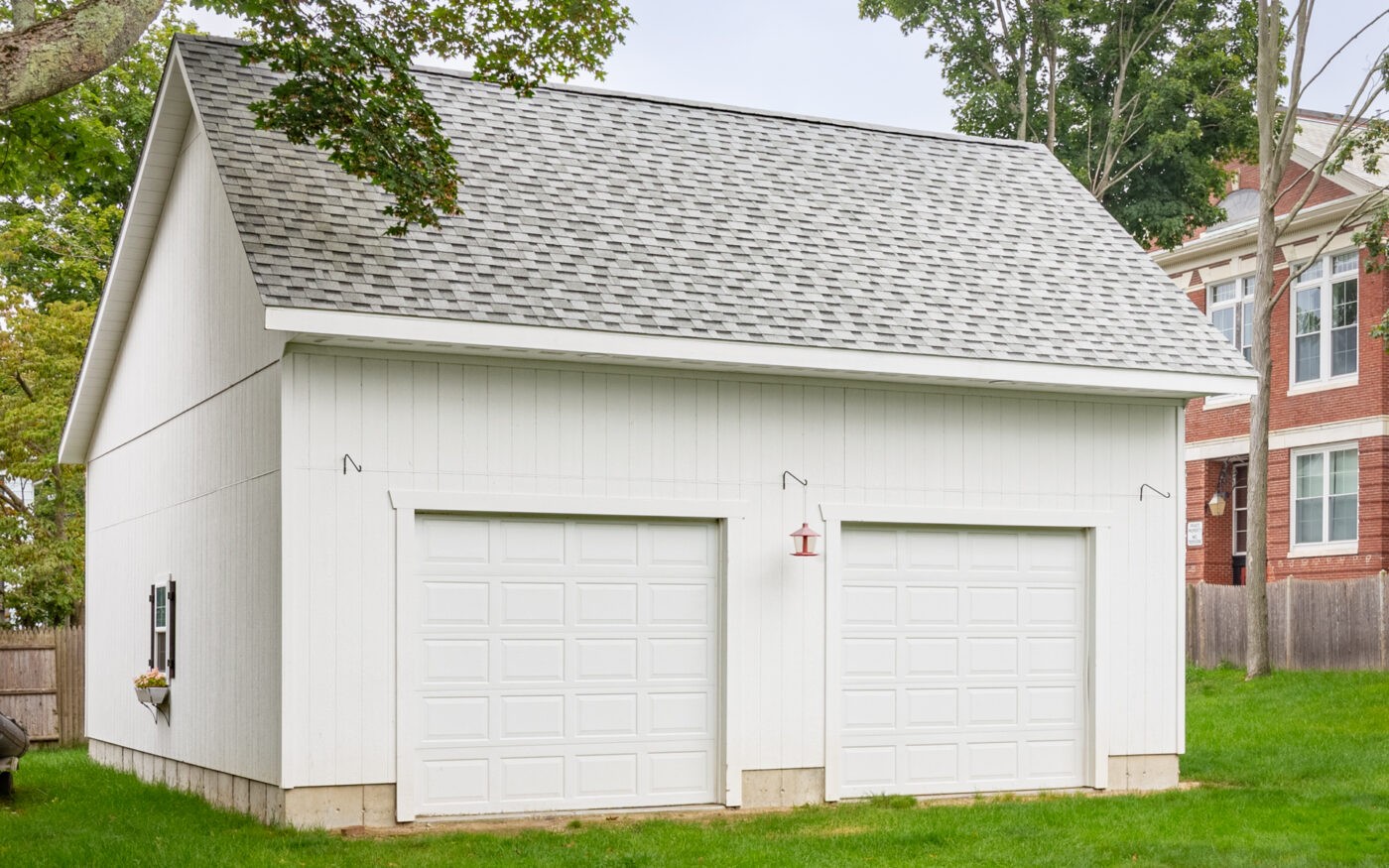
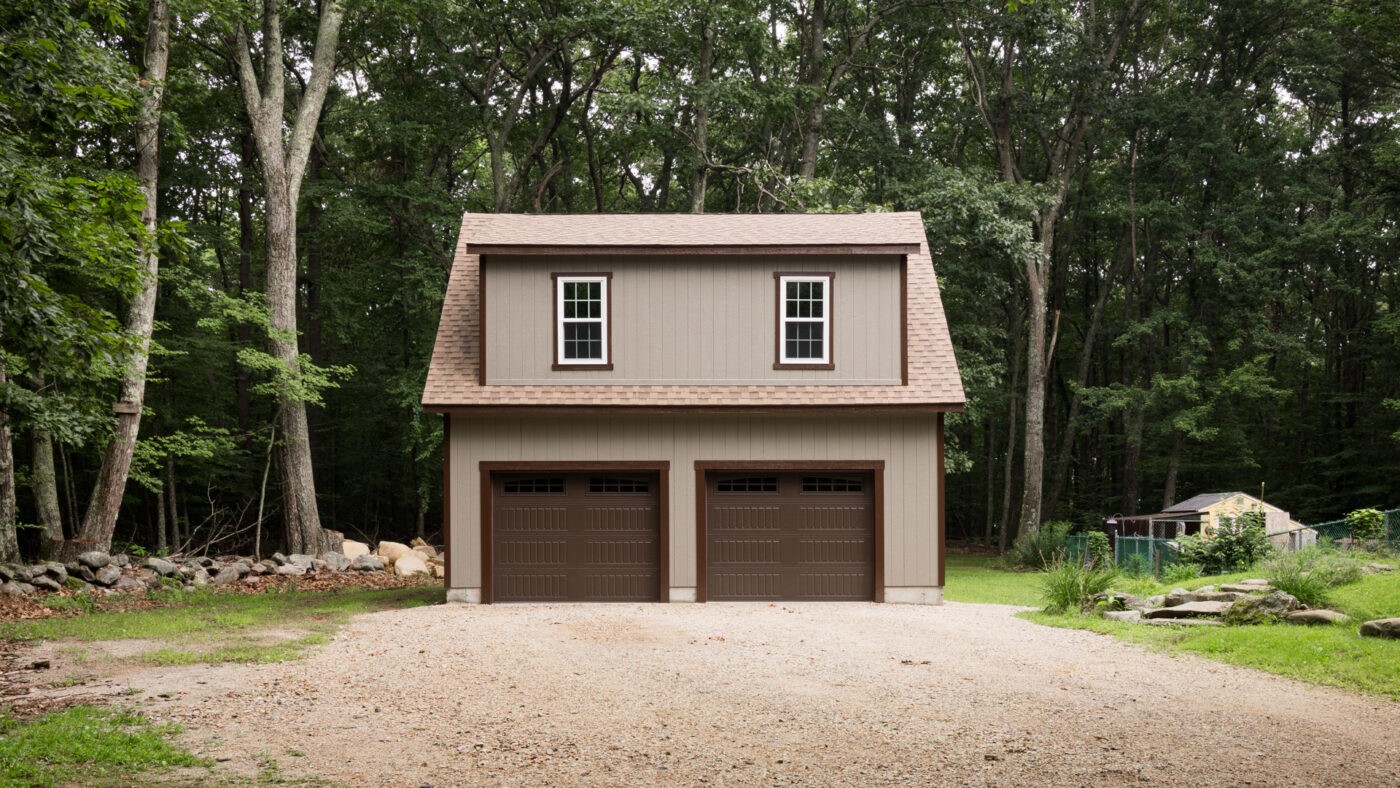
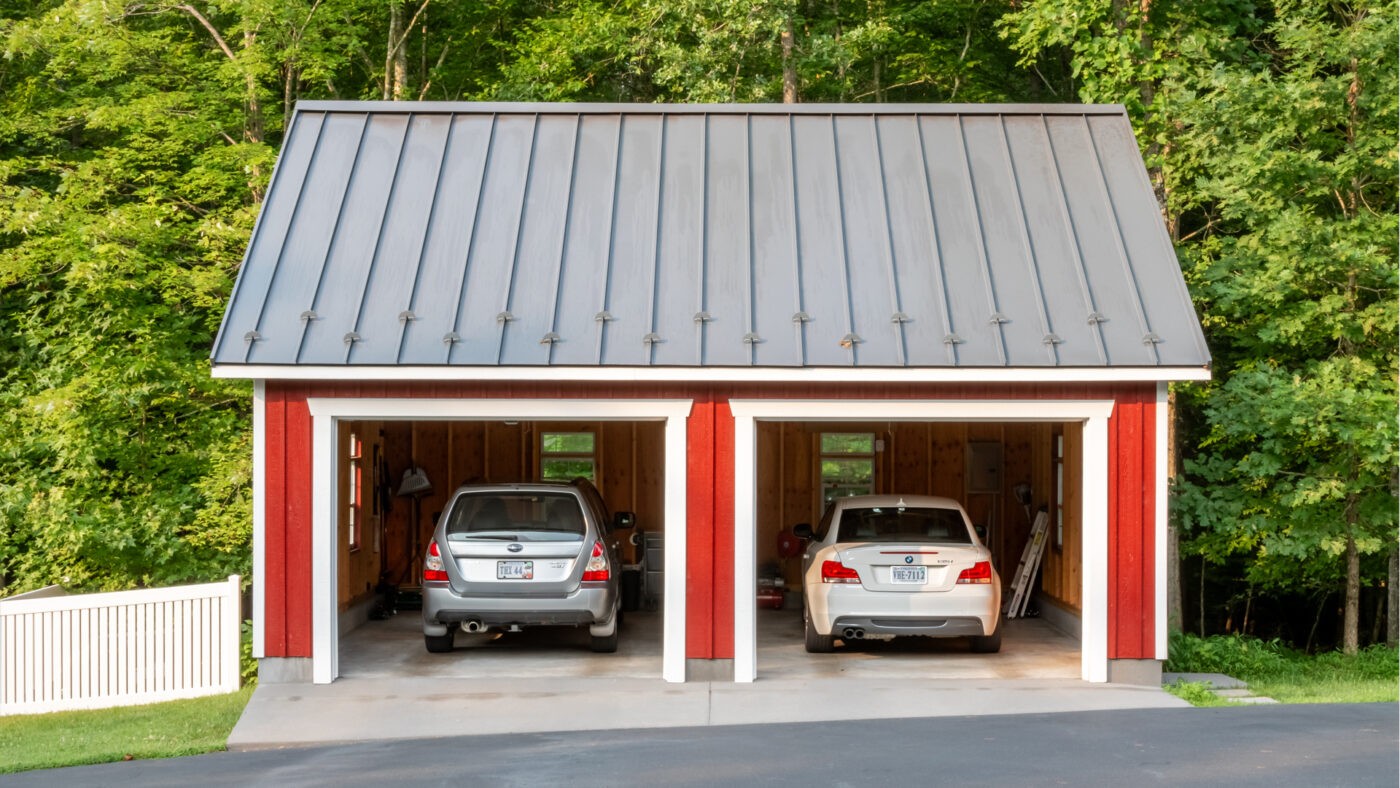
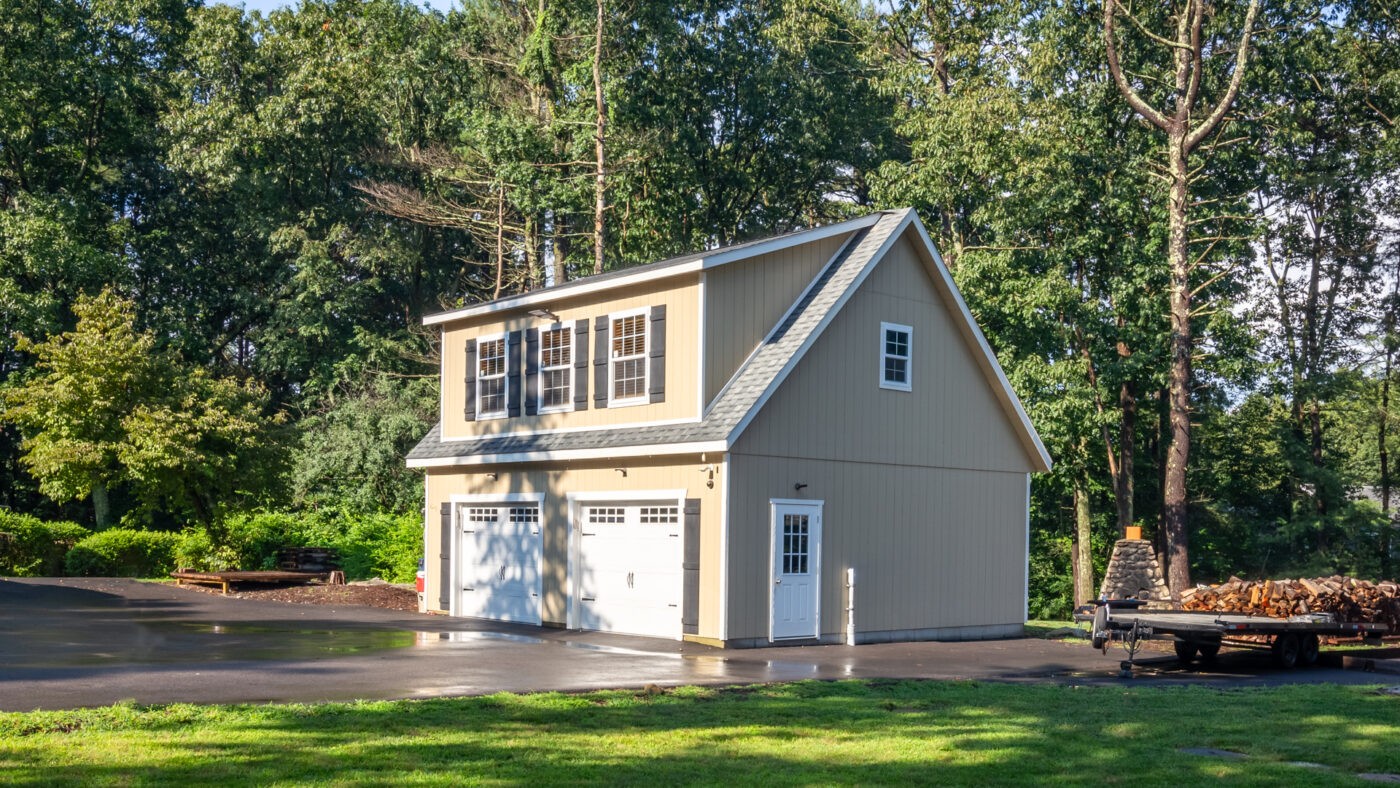
Note: All dimensions are in feet.
This table gives you a starting point, but let’s explore why width is so critical and how to determine the best width for your two-car garage.
Minimum Width for a 2 Car Garage: Is 20 Feet Enough?
If budget is a primary concern and you’re looking at the most compact option, you might consider the minimum two-car garage dimensions of 20 feet wide by 20 feet deep (20×20). This provides 400 square feet of space. Some builders might stretch this slightly to a 22×22 garage (484 sq ft) as a slightly more comfortable “minimum.”
However, opting for the minimum width comes with several drawbacks:
- Limited Storage: A 20-foot wide garage provides just enough space to park two average-sized cars side-by-side. Storage for tools, equipment, bikes, or seasonal items becomes severely limited.
- Narrower Garage Doors: With a 20-foot width, you’ll likely need to install two 8-foot wide garage doors, instead of the more standard 9 or 10-foot doors. This reduces driving clearance and can make maneuvering larger vehicles trickier.
- Door Ding Danger: Parking two cars in a 20-foot wide space leaves minimal room to open car doors without risking dings and scratches against the walls or the adjacent vehicle. Careful parking and slim vehicles are essential.
- Reduced Resale Value: While it may save money upfront, a smaller garage can negatively impact your home’s resale value. Many homebuyers desire ample garage space for vehicles and storage, and a cramped garage can be a deterrent.
Considering Minimum Width? If you are only parking two very small cars and absolutely no storage is needed, a 20-foot width might suffice. However, for most homeowners, increasing the width beyond the bare minimum is highly recommended.
Average Width of a 2 Car Garage: Striking the Right Balance
The “average” two-car garage dimensions offer a more practical and comfortable space. Common average sizes are 24 feet wide by 24 feet deep (24×24) or 24 feet wide by 30 feet deep (24×30). These dimensions provide significantly more flexibility than minimum sizes.
Let’s break down the average dimensions by considering width, depth (length), and height:
| Dimension | Minimum Recommendation | Larger/More Spacious Recommendation | Notes |
|---|---|---|---|
| Width | 24 feet | 28 feet or more | 24 feet allows comfortable parking and some side storage. 28+ feet offers generous space. |
| Depth (Length) | 22-24 feet | 30 feet or more | 22-24 feet accommodates most vehicles. 30+ feet allows for front storage, workbench, etc. |
| Height | 8 feet (wall height) | 10-12 feet or more | 8 feet is standard, but taller walls allow for overhead storage or car lifts. |
Note: All dimensions are in feet.
Why a 24 Foot Width is Often Ideal
A 24-foot wide two-car garage is often considered the sweet spot for many homeowners. Here’s why:
- Comfortable Car Spacing: With 24 feet of width, you have ample space to park two average-sized vehicles with room to open doors comfortably on both sides.
- Storage Potential: The extra width beyond the minimum allows for storage along the sides or back of the garage without overly cramping the parking space.
- Standard Garage Doors: A 24-foot width easily accommodates two standard 9-foot wide garage doors (or even 10-foot doors), providing good clearance for driving in and out.
- Good Resale Appeal: A garage of this size is generally considered desirable by most homebuyers, enhancing your home’s marketability.
Width in Detail: Calculating Your Needs
To understand why width is so crucial, consider these factors:
- Vehicle Width: The average car width is around 6 to 6.5 feet. Two cars side-by-side take up approximately 12-13 feet.
- Door Opening Space: Ideally, you want at least 2-3 feet of clearance on each side of each vehicle to comfortably open doors and walk around. This adds another 6-9 feet to the required width.
- Storage Needs: Do you plan to store lawn equipment, tools, bikes, or other items in your garage? Factor in additional width for shelving or storage cabinets along the walls.
Example:
- Two cars: 13 feet wide
- Door clearance (3 feet per side, total): 6 feet
- Side storage (one side): 5 feet
Total Width Needed: 13 + 6 + 5 = 24 feet
This example illustrates why a 24-foot wide garage is a practical starting point for many homeowners. If you need storage on both sides or have larger vehicles, you’ll want to consider even greater width.
Depth (Length): Don’t Forget the Length of Your Garage
While width is our primary focus, the depth of your two-car garage is equally important. Standard depths range from 20 feet to 30 feet or more.
- Vehicle Length: The average sedan is around 17 feet long. Larger SUVs and trucks can be closer to 19-20 feet.
- Front Storage/Workspace: If you want to walk around the front of your car with the garage door closed or desire a workbench area, you’ll need extra depth.
A 24-foot deep garage is a common choice, providing enough room for most vehicles and a bit of front clearance. For workshops or significant front storage, a 30-foot depth is highly beneficial.
Garage Height: Thinking Vertically for Storage
Garage height is often overlooked but can significantly impact storage capacity. Standard garage wall heights are around 8 feet, with 7-foot high garage doors.
- Overhead Storage: Taller walls (9-12 feet or more) allow for valuable overhead storage racks, keeping items off the floor and maximizing space.
- Car Lifts: If you’re a car enthusiast or need to work on vehicles, a taller garage can accommodate a car lift, requiring ceiling heights of 12 feet or more.
- Larger Vehicles: If you own trucks, vans, or plan to store recreational vehicles, ensure your garage height and door height are sufficient.
For standard storage and vehicle parking, an 8-foot wall height is common. Consider increasing height for enhanced storage or specialized needs.
Functionality: How Will You Use Your 2 Car Garage?
Before settling on dimensions, carefully consider how you plan to use your two-car garage. Ask yourself these questions:
- Vehicle Types: What size vehicles will you park? (Compact cars, sedans, SUVs, trucks?)
- Number of Vehicles: Strictly two cars, or occasional motorcycles, trailers, etc.?
- Storage Needs: Tools, lawn equipment, seasonal items, sports gear, workshop supplies?
- Workspace: Do you need a workbench or dedicated project area?
- Other Uses: Gym, hobby space, entertaining area?
- Future Needs: Will your vehicle or storage needs likely increase in the future?
Answering these questions will help you determine if you need a minimum, average, or larger-than-average two-car garage width and overall dimensions. Don’t underestimate your storage needs – most people find they can easily fill up any available garage space!
Building Codes and Permits: Regulations to Consider
Local building codes and zoning regulations will influence your garage size and placement on your property.
- Maximum Size: Many areas have limits on the maximum square footage of accessory buildings like garages, often around 1,000 sq ft (which covers most standard two-car garage sizes).
- Setbacks: Codes dictate how far your garage must be set back from property lines, the street, and your house.
- Permits: Building permits are almost always required for garage construction, whether attached or detached. Zoning permits may also be necessary.
Always check with your local building department or planning office before finalizing your garage dimensions and starting construction. Understanding local regulations will prevent costly issues and ensure your garage project complies with the law.
Cost Considerations: Garage Size and Budget
The size of your two-car garage directly impacts the cost. Larger garages require more materials and labor, increasing the overall price.
Here’s a general price comparison based on size, style, and siding type (prices are approximate and can vary by location and builder):
| Size (Width x Depth) | Stories | Siding Type | Style | Approximate Price |
|---|---|---|---|---|
| 20ft x 20ft | 1 | Wood | Workshop | $15,702 |
| 20ft x 20ft | 1 | Vinyl | Workshop | $19,664 |
| 24ft x 24ft | 1 | Wood | Workshop | $23,446 |
| 24ft x 24ft | 1 | Vinyl | Workshop | $29,230 |
| 24ft x 30ft | 1 | Wood | Workshop | $26,587 |
| 24ft x 30ft | 1 | Vinyl | Workshop | $33,234 |
Note: Prices are for example only, consult with builders for accurate quotes.
As you can see, moving from a minimum size to a more spacious average size adds to the cost. However, consider the long-term value and functionality. Investing in a slightly larger garage upfront can pay off in convenience, storage capacity, and resale value down the road.
Final Thoughts: Choosing the Right Width for Your 2 Car Garage
Determining the ideal width for your two-car garage is a balance of needs, budget, and property constraints. While a minimum width of 20 feet is possible, a width of 24 feet is generally considered the most practical and versatile choice for most homeowners. This width provides comfortable parking, reasonable storage, and good resale appeal.
If you have larger vehicles, significant storage needs, or simply desire extra space, consider increasing the width to 26 or 28 feet or more. Carefully assess your current and future needs, consider building codes and budget, and choose dimensions that will provide long-term satisfaction and value.
For further visual guidance and inspiration, explore online resources and videos showcasing different two-car garage layouts and dimensions. Planning carefully will ensure you build a two-car garage that perfectly fits your lifestyle and needs for years to come.
Get a Free Garage Estimate
